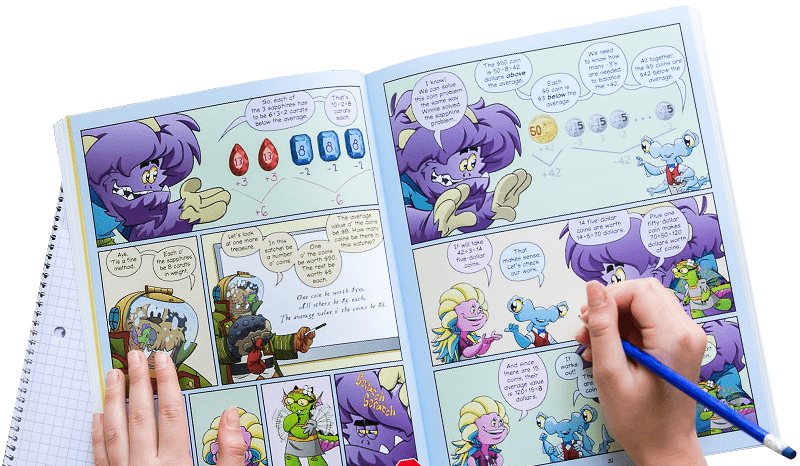Candle Conundrum
Create an illusion sure to amaze! Watch as one candle magically changes color before your eyes.
Instructions
This surprising illusion is inspired by other classic "geometric vanishing" puzzles. (You can read more about these in Martin Gardner's Mathematics, Magic and Mystery.) Depending on the age of your child, this activity will take a lot of "working together." Even if you end up doing most of the work, you can still do a lot together: counting as you measure, coloring, decorating, and of course counting the candles of each color in disbelief!
Use a ruler to draw a line down the center of a standard letter-size sheet of paper (8.5"x11").

Now adjust the ruler so that the left edge of the paper aligns with the 1/2" mark on the ruler.

Starting at 1", make small tick marks 1/8" on either side of the inch marker. Repeat this for each inch marker from 1 to 11. This will give you room for 11 candles.

Before you move the ruler, also make a tick mark at 4.5". (This is where you'll cut the paper later.)

Now it's time to draw your candles. Pick any two colors. We used green and blue. Draw green candles at positions 1, 4, 8, and 11. It helps the illusion if the candles are different heights. Be sure there is at least some candle above and below the center line. Draw blue candles at positions 2, 3, 9, and 10. For now, these "candles" are nothing more than vertical bars. The decorating comes later.


In positions 5 and 7, draw two more green candles, one completely below the line, and the other completely above it. Then draw one more blue candle (above and below the center line) in the middle.


Now cut at the 4.5" mark (between candles 4 and 5) and also along the center line.

Decorate the candles by coloring them in, and adding wicks, flames, bases, and drops of wax. Be sure that the flame for candle 5 is above the cut, and the base for candle 7 is below the cut.
Now get ready for the magic! One arrangement of the bottom pieces gives 6 green candles and 5 blue. The other arrangement gives 5 green and 6 blue!


Don't forget: it's Beast Academy Playground, not Beast Academy Study Hall. Change the rules, be silly, make mistakes, and try again. The Variations and Learning Notes are here for you if you want to dive deeper, but not all of them apply to learners of every age. The most important thing is to have fun.
What do you think of this activity?
We're always looking to improve. Submit your feedback to us below.
- paper
- pencil
- markers
- scissors
- ruler
- wonder
- counting
- measuring
- spatial reasoning
- MP1
- MP2
- MP3
- K.CC.B.4
- K.CC.B.5
- K.CC.C.6
- 2.MD.A.1

Ready to level up?
Keep problem solving with Beast Academy’s full math curriculum for students ages 6–13. Check out our captivating comic book series and immersive online platform.
LEARN MOREBring problem-solving to your classroom
Keep your entire class engaged with a full book and online math curriculum, for students ages 6–13. 98% of teachers say they’re satisfied with Beast Academy.
LEARN MORE



Ready to level up?
Keep problem solving with Beast Academy’s full math curriculum for students ages 6–13. Check out our captivating comic book series and immersive online platform.
LEARN MOREBring problem-solving to your classroom
Keep your entire class engaged with a full book and online math curriculum, for students ages 6–13. 98% of teachers say they’re satisfied with Beast Academy.
LEARN MORE
Sign up to be notified when new videos are released.















































